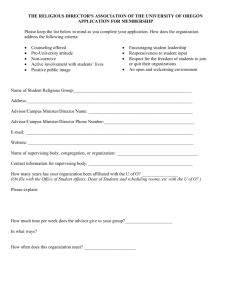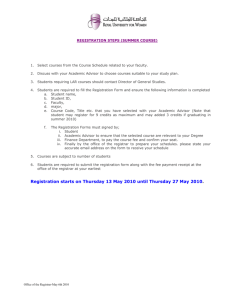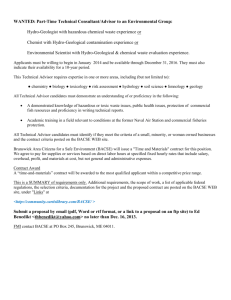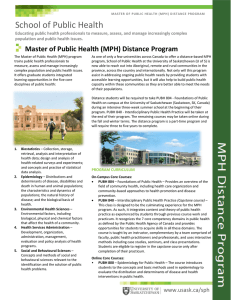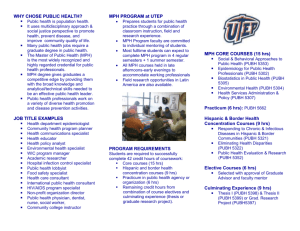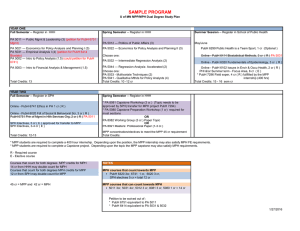Professional Paper Guidelines - College of Health Professions
advertisement
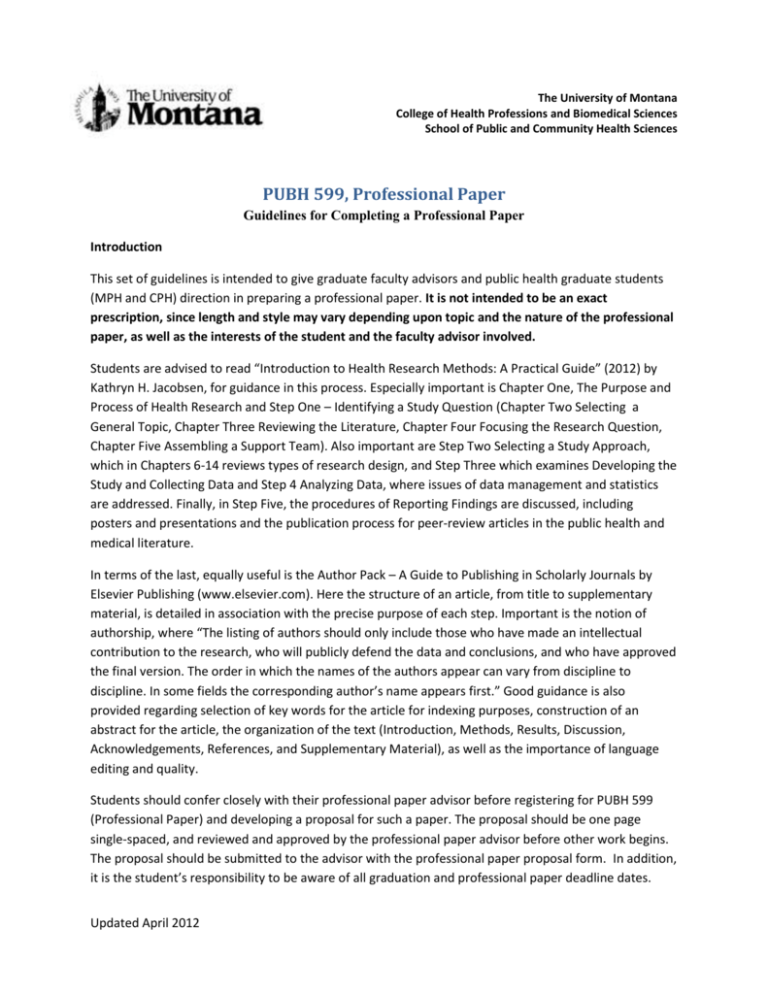
The University of Montana College of Health Professions and Biomedical Sciences School of Public and Community Health Sciences PUBH 599, Professional Paper Guidelines for Completing a Professional Paper Introduction This set of guidelines is intended to give graduate faculty advisors and public health graduate students (MPH and CPH) direction in preparing a professional paper. It is not intended to be an exact prescription, since length and style may vary depending upon topic and the nature of the professional paper, as well as the interests of the student and the faculty advisor involved. Students are advised to read “Introduction to Health Research Methods: A Practical Guide” (2012) by Kathryn H. Jacobsen, for guidance in this process. Especially important is Chapter One, The Purpose and Process of Health Research and Step One – Identifying a Study Question (Chapter Two Selecting a General Topic, Chapter Three Reviewing the Literature, Chapter Four Focusing the Research Question, Chapter Five Assembling a Support Team). Also important are Step Two Selecting a Study Approach, which in Chapters 6-14 reviews types of research design, and Step Three which examines Developing the Study and Collecting Data and Step 4 Analyzing Data, where issues of data management and statistics are addressed. Finally, in Step Five, the procedures of Reporting Findings are discussed, including posters and presentations and the publication process for peer-review articles in the public health and medical literature. In terms of the last, equally useful is the Author Pack – A Guide to Publishing in Scholarly Journals by Elsevier Publishing (www.elsevier.com). Here the structure of an article, from title to supplementary material, is detailed in association with the precise purpose of each step. Important is the notion of authorship, where “The listing of authors should only include those who have made an intellectual contribution to the research, who will publicly defend the data and conclusions, and who have approved the final version. The order in which the names of the authors appear can vary from discipline to discipline. In some fields the corresponding author’s name appears first.” Good guidance is also provided regarding selection of key words for the article for indexing purposes, construction of an abstract for the article, the organization of the text (Introduction, Methods, Results, Discussion, Acknowledgements, References, and Supplementary Material), as well as the importance of language editing and quality. Students should confer closely with their professional paper advisor before registering for PUBH 599 (Professional Paper) and developing a proposal for such a paper. The proposal should be one page single-spaced, and reviewed and approved by the professional paper advisor before other work begins. The proposal should be submitted to the advisor with the professional paper proposal form. In addition, it is the student’s responsibility to be aware of all graduation and professional paper deadline dates. Updated April 2012 Finally, students are required to submit a copy of their final, approved draft of their professional paper to the SPCHS department office, where it will be kept on file. General Recommendations for Professional Paper Research A professional paper represents a graduate student’s attempt to make an original contribution to the body of knowledge in one of the following areas of public health: epidemiology, biostatistics, social and behavioral science, environmental health, and health service administration. Central to the purpose of each professional paper must be an original analysis, synthesis, application, or presentation that is based on existing knowledge, contributes to it, and most importantly, attempts to extend, enhance or clarify existing knowledge. A professional paper may be the result of a data-driven research project, the result of a practicum project which may be either data-driven or driven by policy/administration recommendations, or an independent project developed solely in consultation with a faculty advisor based on shared academic and professional interests. The professional paper product may be a research paper that is submitted to a professional journal for peer review and possible publication, a conference paper or poster submitted and accepted at a professional meeting and delivered by the student, a policy paper or recommendations for a health agency, or other similar products. These can include meta-analyses, traditional literature reviews, white papers, and book reviews, as well as original data-driven research papers, policy papers, and working papers. Professional Paper Format The final professional paper draft may be in a variety of formats depending on what is being produced and the subject matter involved. The presentation approach should be guided by the faculty advisor involved. Supervision and Grading The professional paper is envisioned as an opportunity for the student to receive direct mentoring while in the public health program. As such, one faculty member should serve as the supervisor for PUBH 599. This faculty member can be either a core faculty member or an affiliated faculty member, giving the student a wide range of potential exposure to professional activity across the wide range of faculty supporting the MPH and CPH programs at The University of Montana. Individual grades for student performance in PUBH 599 should be forwarded by the supervising faculty member to the student’s advisor (one of the public health core faculty) for posting at the end of the semester that the student carries out the professional paper activity. Updated April 2012



